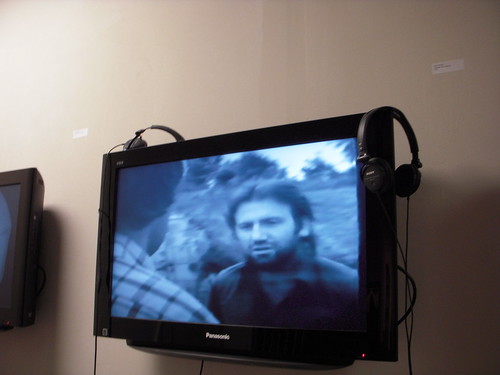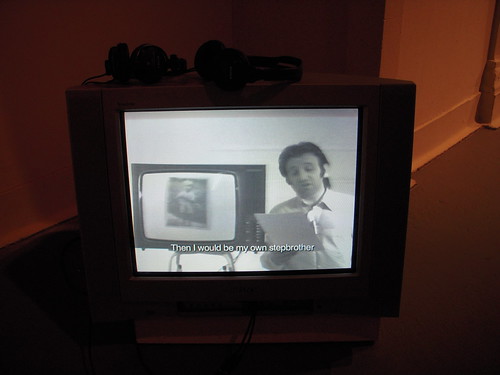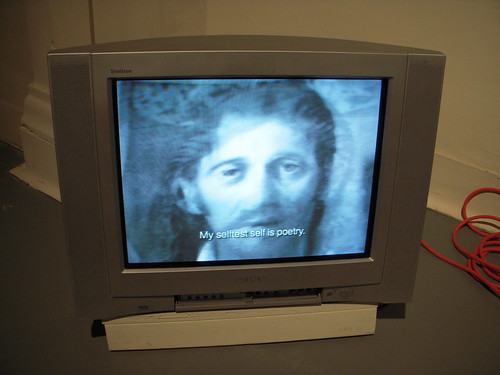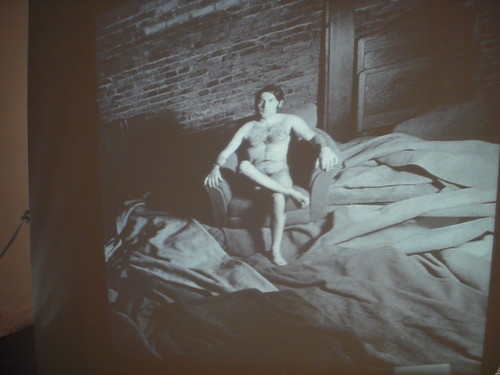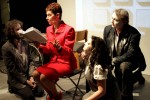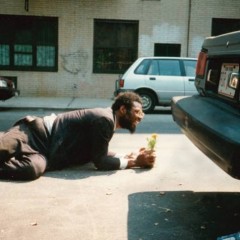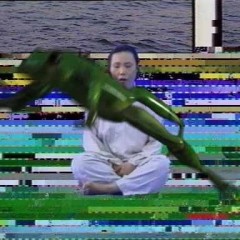This week’s Weekly has my review of Peter Weibel: Rewriter at Slought. Below is the copy with some pictures.
Austrian artist Peter Weibel’s video and text art from the 1960s and ’70s, now on view at the Slought Foundation, fits perfectly in today’s concept-driven and media-obsessed art world. The work’s refusal to be beautiful shocked audiences back when most thought art was a pretty painting or figurative sculpture. But today, Weibel’s work—with its playful approach to subject and its smart wordsmithing—prefigures much contemporary art.
Throughout the large show, Weibel’s works have an undeniable charm. Soliloquy (1973), a wry word piece that combines the artist’s fascination with words and electronic media, shows Weibel as he plays a recording of a sentence fragment then repeats the phrase, changing the placement of the words in the sentence into a string of nonsense. He’s an engaging performer.

Does the young Weibel not resemble Patrick Dempsey?
Videos like Parenthetical Identity, in which he tries to define himself by reading a script of his life like a news anchor while a slideshow plays behind him, are deadpan and endearing. (It doesn’t hurt that the young artist, with his muttonchop sideburns and thick wavy hair, resembles Patrick Dempsey.) His earnest attempts at self-discovery remind you that contemporary self-discoverer Alex Bag did not invent this genre, although she, too, does it well.
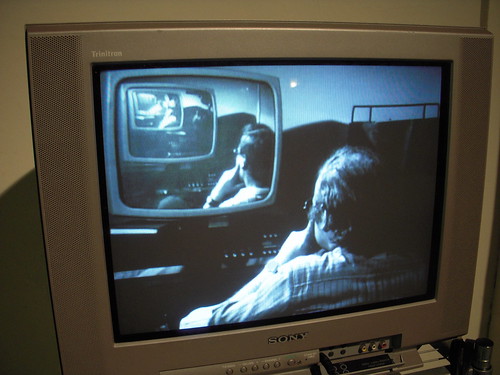
TV Aquarium (TV Death 1), 1970, video
Many of the works, for all their anti-aesthetics and anti-art leanings, are quite engaging. TV Aquarium (TV Death 1), from 1970, is a static tableau of a person watching television nested into a screen of another person watching television. It’s a striking image and a great critique of the media’s seduction.
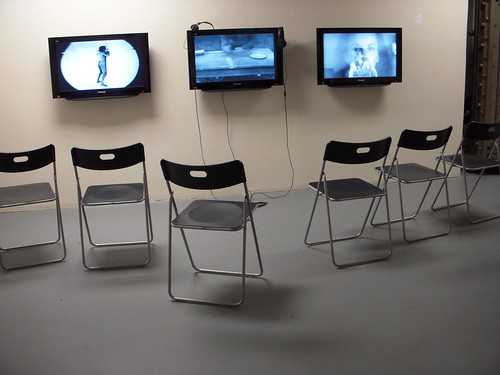
Installation of Weibel’s works at Slought
Vulcanology of Emotions (1973) feels like a complete movie in a minute with a screaming argument and a tryst in the grass. And Trinity (1975), in which the artist’s face morphs slowly into an image of Jesus and back again, is a lovely and technically sophisticated work with relevance to today’s worship of the superstar artist.
Weibel’s street performances with his then-partner Valie Export, still seem off-the-charts radical. In Tap and Touch Cinema (1968)—in which Export wore a small cardboard box over her naked chest—Weibel, like a carnival barker, extolled the beauty of her breasts and encouraged people to put their hands inside the box to touch them. This work transgressed social mores then and continues to do so today.
Through the years, Slought has provided a direct link to European theoretical and conceptual art, with great shows by Weibel, Hermann Nitsch, Günter Brus and others. Highly relevant today and especially for young American artists whose view of art history is mostly confined to what’s happened in this country over the last 10 years, these shows provide a lesson on how to break ground and move forward.
Peter Weibel: “Rewriter.”
Through March 11.
Slought Foundation, 4017 Walnut St.
215.701.4627.



